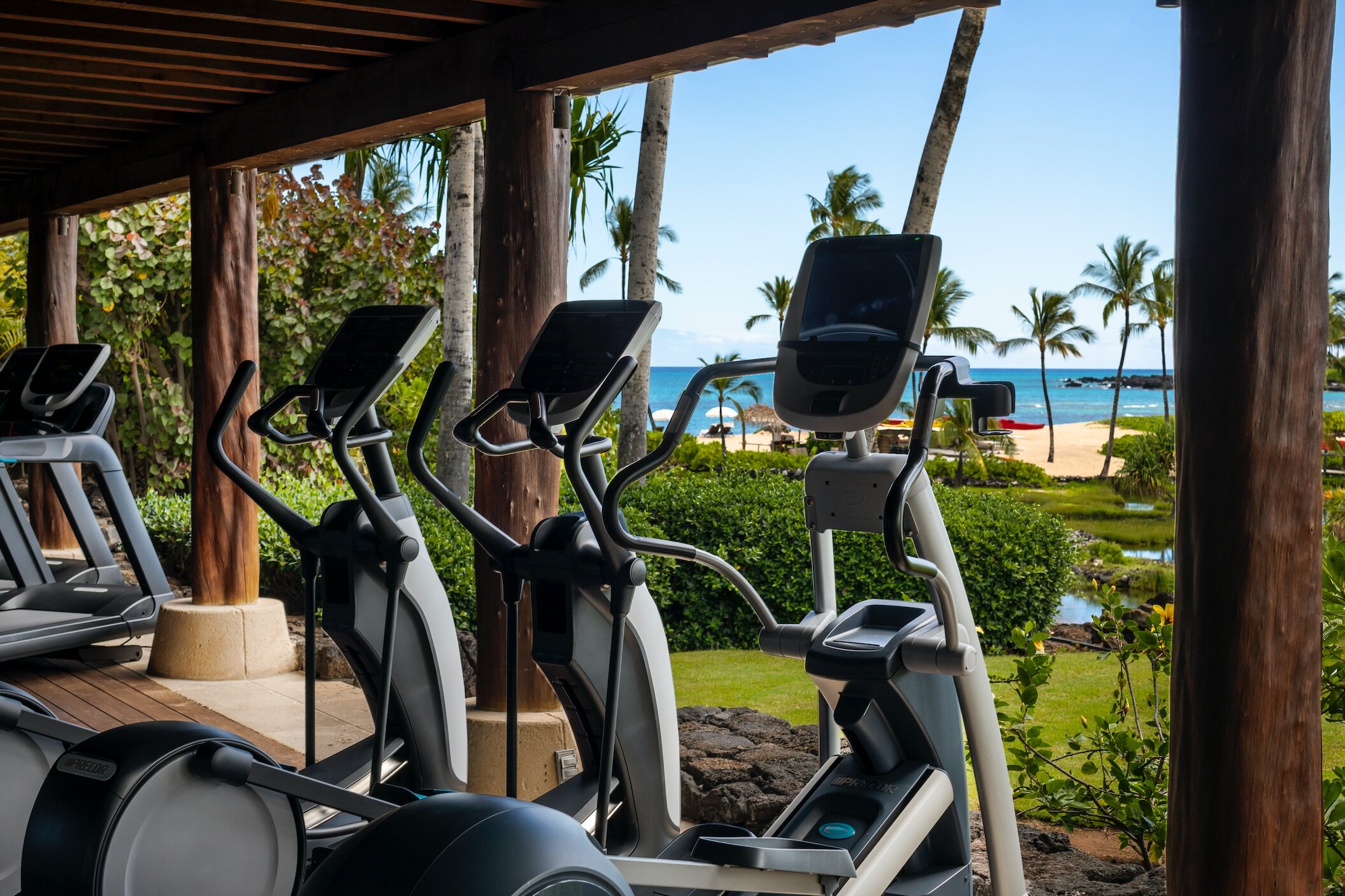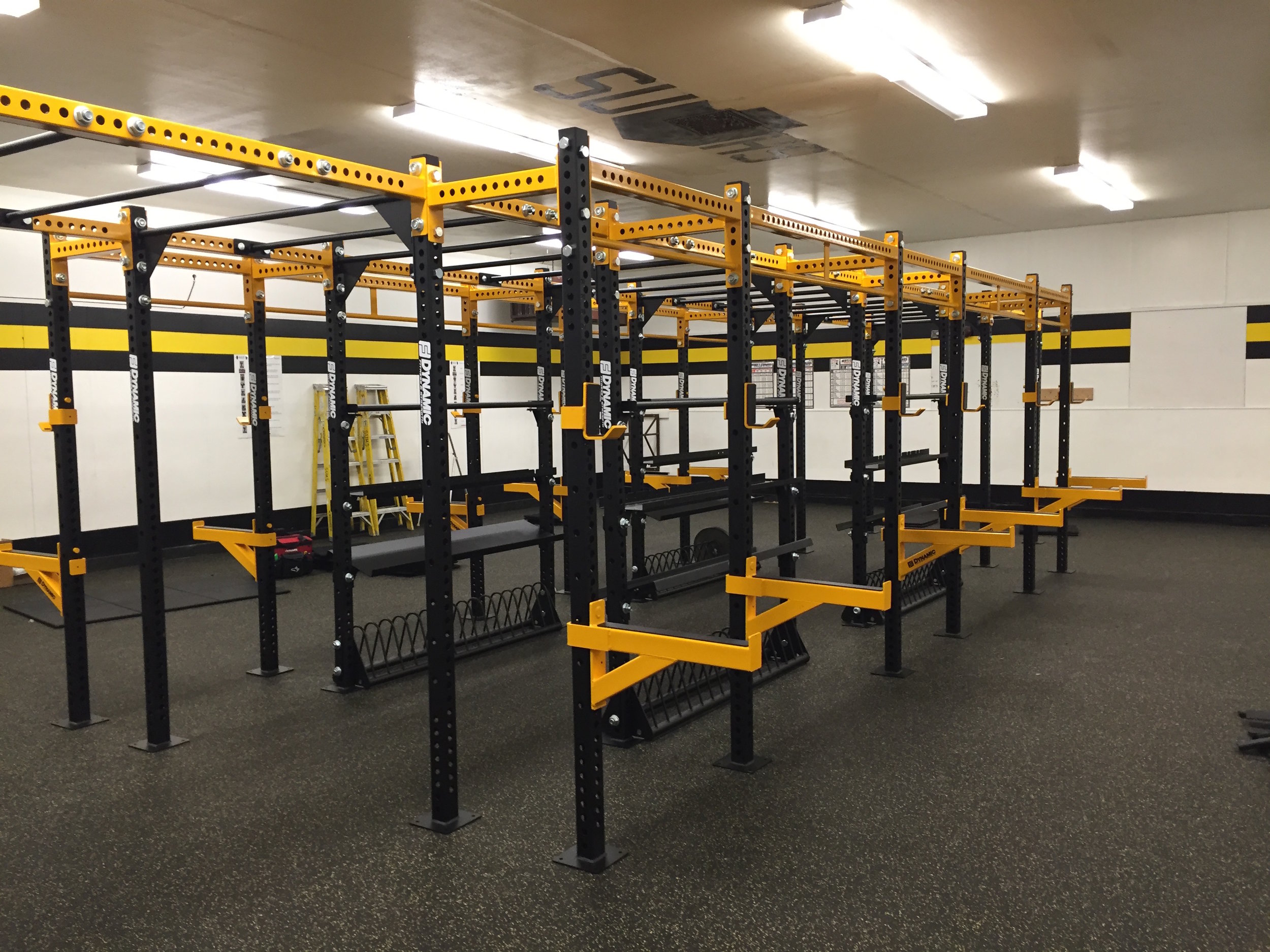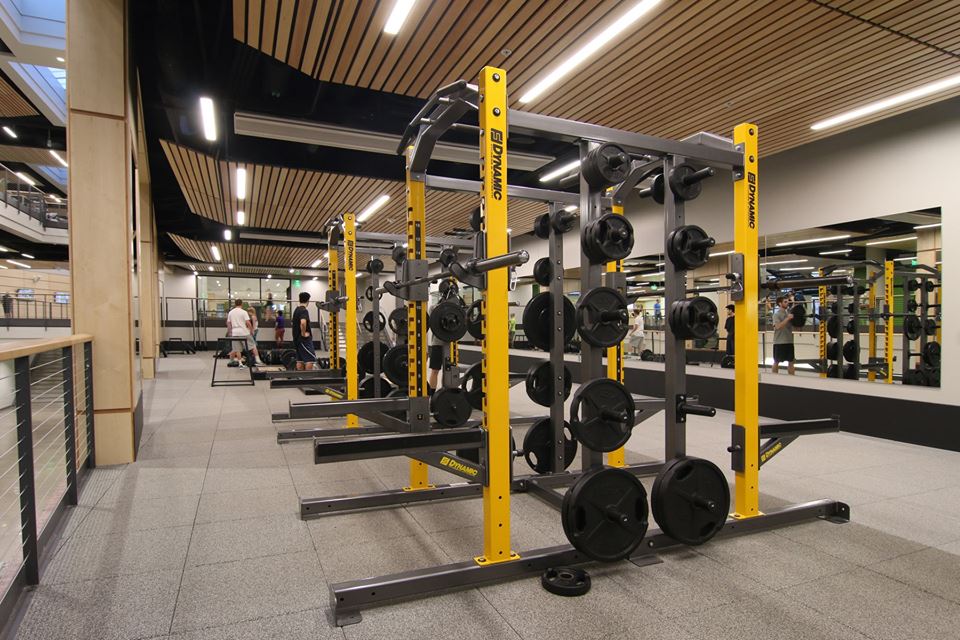HOW TO: MAINTAIN YOUR FITNESS ROOM ON A BUDGET
Has your budget taken a hit? How can you maintain a high-quality fitness amenity without breaking the bank? Learn about where to save, where to spend, and other practical steps you can take.
In these unprecedented times that we’re facing, many budgets have taken a hit. You want to be able to provide the same high-quality services and amenities to your customers that you have in the past but current economics make that difficult. With the right approach and careful analysis, you can maintain a high-quality fitness center on a budget. Here are some tips:
MAINTENANCE!
The primary way that you can continue to provide a high-quality fitness amenity is by keeping it high quality with proper maintenance.
Wipe everything down regularly. Even if your fitness center is currently closed, do not neglect vacuuming and dusting. When dust and dirt make their way inside the machines, they will drastically increase friction on belts and chains, causing them to break down faster. Keeping your fitness center clean can help to prevent buildup inside of your machines.
One of the more destructive elements that you should be mindful of is sweat. Cleaning the ramps of your elliptical, around and under the belt of your treadmill (carefully!), and any area where sweat collects will go a long ways towards extending the life of your machines.
Rotate your equipment. Studies have shown that every fitness center seems to have a "sweet spot” that exercisers tend to gravitate toward. This means that you will likely have one treadmill with substantially more miles than the rest. Or an elliptical that needs a new belt when the rest of your ellipticals have minimal use. If you regularly rotate your equipment, you will even out the usage and extend the life of all of your equipment. (Note: Most fitness equipment is extremely heavy. If you ask your employees to rotate your equipment, make sure that they are physically capable and understand how to do so safely.)
Have you been closed for a while? Ensure that all of your equipment is completely dust-free before you let your customers back into the fitness center. This includes removing covers from your ellipticals and bikes to clean anything that has built up on belts and chains. You will also want to clean under your treadmill belt.
If you’re not sure how to perform this maintenance effectively, give us a call or request a preventative maintenance visit here. We can do a one-time deep clean or recommend a regular maintenance schedule.
But, eventually, things will wear out. How should you proceed? Ask yourself a couple of questions.
DO I ACTUALLY NEED THIS PIECE OF EQUIPMENT?
We find that many of the facilities we work with have more equipment than they need. Today’s fitness trends are often best facilitated by open space for body and free weight exercises. For instance, what if you have a chest press that is in dire straits? You might not need to replace it. Do you have a multi-purpose unit like a functional trainer? Or heavy enough free weights? These can easily replace your need for selectorized units depending on the demographics of your customers.
A big key to maintaining a great fitness offering while reducing the amount of equipment you have in your space is providing direction. Great looking wall charts that demonstrate how an FTS Glide can be used to perform flys or the proper mechanics of a dumbbell overhead press make all the difference.
There are many factors to consider. We provide complimentary space planning and long term replacement recommendations. We’re here to help you decide if something should be replaced or eliminated based on the demographics of your customers. Let us know if you need assistance.
What about those pieces you know you need?
SHOULD I REPAIR OR REPLACE?
Does your elliptical have a strange knock? Is your treadmill belt slipping? Maybe the handle is broken on a piece of strength equipment that you need to keep. An important question comes into play: should you repair the piece or replace it?
We would love to be able to write an exhaustive list of circumstances and recommendations… But it would be impossible! We can’t cover all of the scenarios and diagnose your equipment with a blog post. Our service technicians are trained to make recommendations for when to repair and when to replace. We won’t recommend you replace a treadmill that needs a simple repair when it has years of life in it. And we won’t recommend an expensive repair on a unit that is on its last leg. Our sales and service teams work together seamlessly to recommend the best value for your business. Contact our team here.
CHOOSE THE RIGHT EQUIPMENT
When it comes time to spend your precious dollars on replacing a piece of equipment, how do you choose? It’s easy to want to run out and buy the cheapest, flashiest piece of equipment that you can find. Please don’t. Choose the equipment that is right for your demographic, your usage rates, and the lowest-cost-in-use.
What does lowest-cost-in-use really mean? When you add up the initial purchase price and repair costs over the life of the equipment, you have your cost-in-use.
It doesn’t save you any money to buy a piece of equipment that will need constant repair. We don’t believe in making those kinds of recommendations.
We have options for every scenario. If your facility is low-use, we might recommend a high-quality refurbished piece of equipment. Or if your equipment is really going to take a beating, we will provide you with a piece of equipment that can stand up to the impact.
One of the brands that we recommend most often is Precor. Precor has a reputation for excellent customer service (think warranty claims) and lowest-cost-in-use equipment. We have worked with them for more than 20 years, handling any repairs and warranty claims for our customers. We can say with absolute confidence that their equipment is an exceptional value. Precor has created equipment lines based on expected usage. When you have the right line of equipment, you don’t pay for more than you need and can rest assured that equipment will hold up to years of use in your facility. Precor also puts tremendous effort into designing their equipment to be the best user experience possible. Your customers will thank you for a great workout.
Our customers keep coming back to us year after year. Why? Because we carefully analyze their unique situation and made recommendations to bring the greatest value to their facility. Their equipment stands the test of time and requires minimal repairs. Their customers are happy because they are getting a great workout. And their return on investment adds to the success of their business. Let us add to your success with recommendations for an equipment purchase you can have confidence in.
We believe in being your partner, supporting your bottom dollar and your reputation. Let’s start working together on a fitness amenity that fits your budget today.
EDUCATION: RIGS VS RACKS
This post is all about the differences, benefits, and limitations of rigs and racks.
RIGS VS RACKS
Fitness trends are changing. Have you noticed how much functional fitness has grown in popularity over the last 10 years? This, and the tendency towards training general population students like athletes, have changed the needs of a school weight room. Since most schools don’t have an opportunity to do a major update on their weight room more often than every 10-15 years, it’s important to make the right decision... You’ll be living with it for quite a while. This post is all about educating you on the differences, benefits, and limitations of rigs and racks.
What is a rig?
Rigs are so versatile they are difficult to define. For the purpose of our discussion today we will define a rig as a versatile frame with the ability to reconfigure your “stations” to your needs of the day. It can be anywhere from 4’ all the way 24’ and beyond. It can be just about any shape you want with almost any type of station you want. We will assume you would be wanting your rig with as many lifting stations as possible.
Here are some examples of rigs:
What is a rack?
We’re talking half racks, power racks, and ¾ racks. They can be “doubled” back to back, they can be annexed with storage and there are even a few accessories that can be added. Often you can expect to get not only a lifting station but also a pull-up station.
Pros of Rigs
Rigs are a great solution to getting the maximum amount of users in a tight space while providing a way to transition to other modalities. What does that really mean? Versatility. You could have a tiny 4’ wall-mounted rig, you could have a 24’ self-standing rig in the middle of your space or anything in between.
This means that you can tailor your rig to your training style and the number of students you want to train simultaneously. One option we love is a 6’ by 24’ rig. A setup like that means that you can have 6 lifting stations that you can monitor by walking down the center of the rig.
When you’re not doing lifts you have an unending amount of stations you can set-up such as dips, glute/ham, pull-ups, TRX, ball targets, battle ropes, etc. Maybe you even want to have turf down the center so that your students can be pulling a sled in the protected space in the center of the rig while other stations on both sides of the rig are being utilized.
All of this versatility adds up to space-saving. Training more students in the same amount of space.
Another benefit of rigs is they tend to be budget-friendly. For example, it is about 30% less to get a rig with 6 lifting stations than 6 free-standing half racks.
Cons of Rigs
While rigs can be configured to fit the needs of powerlifting and/or sports specific training they tend to put athletes closer together and not provide as much privacy as a power rack can. This makes monitoring even more important.
Rigs tend to be really basic in style, you could even describe them as raw. This may or may not fit with your vision for the room. The style and “feel” of the room need to be considered.
Another difficulty with rigs is that they need to be bolted to the ground. This requires certain conditions and sometimes it’s just not possible to do that. Rigs also tend to be tall and require a taller ceiling height. Plate storage can also be less functional and more cumbersome depending on the setup you select.
And then there’s the issue of space. Rigs are hugely space-saving but if you really have only a very small amount of space to work with, you may not be able to get a rig in that really adds to the value of your space.
Pros of Racks
Racks have been the go-to item for weight rooms for years. Power racks and half racks are fairly specific to the needs of the coach and the athletes performing the exercise.
If you’re doing Olympic lifts they are the gold standard. They provide adequate space to provide lifters with a safe, controllable environment. Collegiate athletics are going to lean towards a rack because they are more accommodating with power-lifting, better for moving a lot of heavy weight, and for linear strength programming. Plate storage is easy to access and efficient.
Plus a robust rack is going to look strong, it’s going to create a substantial feel in your weight room.
Cons of Racks
The biggest con on racks is that they are just not as versatile as a rig. You have a very limited movement plane to work with. When using a rack you know the lifts you can do and there’s not much of an opportunity to go outside of that.
They are not going to give you the same access to versatile dynamic/functional movements as a rig. The accessories and attachments that you can use on a rack are very limited. When putting multiple racks in a room you have the potential for a lot of “dead space” that would be utilized if it were a rig.
What should I use?
By now you might know exactly which option you lean towards. We feel these factors are the big 3:
Training Style: Are you performing just Olympic movements or are you wanting to provide more functional training like suspension training and room for dynamic movements?
Amount of students you want to train: Are you working with a small group(or with multiple coaches) that you can monitor easily or do you need to be able to monitor more students in the program simultaneously?
Budget: Do you have space and dollars to spread out or do you need to keep it really efficient?
Honestly, there are even more factors to consider than what we have mentioned in this article. For instance, when you add in the right flooring you can have the equivalent of lifting platforms in every square inch of your space. Is that beneficial for your space? That is exactly why we don’t believe in a one-size-fits-all approach to fitness room design.
We’d like to get to know your training style, your team, and your space so that we can help you to consider all the factors and assist you in building a facility for your students and athletes that will serve your needs for years to come. Get started on your project here.













